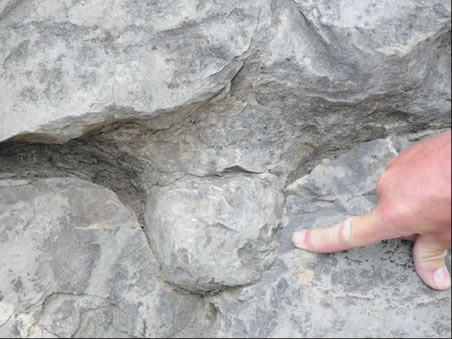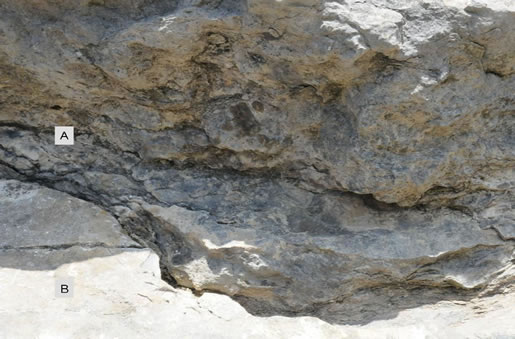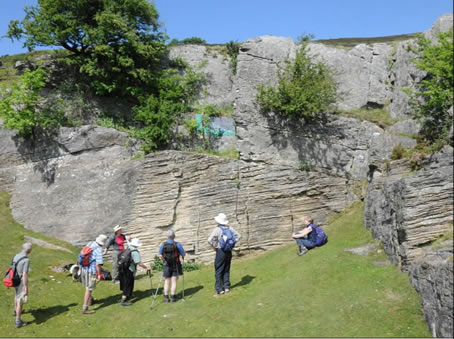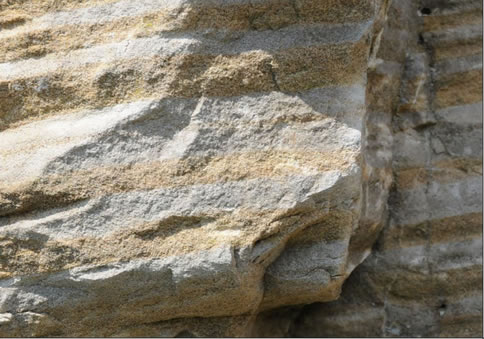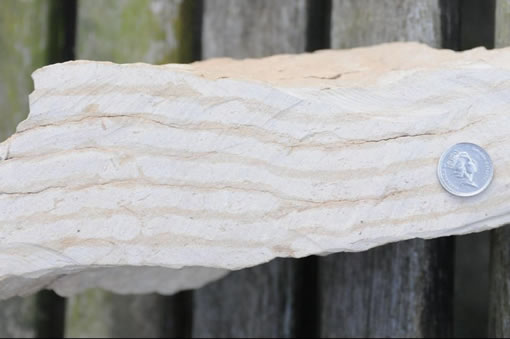Locality 3, NGR SJ230434
This locality was described as a palaeokarstic hollow in the limestone filled with mudstone and pebbles, the pebbles showing imbricate structure and cross bedding.
The group found that the pebbles ranged in size up to about 50mm in the longest dimension. Most were red in colour with pale zones interpreted as reduction spots. The fine grained mudstone was colour banded, presumably for the same reason. The pebbles were tabular and sub-rounded rather than well-rounded. A test with hydrochloric acid demonstrated that the cement was not calcareous. Rather disconcertingly many of the pebbles looked more like nodules than clasts, although that may be a feature of the way they weather. A larger clast was broken and the dark purple fracture surface revealed dark fine grained minerals with a high proportion of muscovite. Superficially all the clasts appeared to have the same mineralogy and no carbonate clasts, for instance, were identified.
Whatever the origin of the pebbles, there is no doubt that they now form part of the infill of some palaeokarstic feature and are therefore evidence of a significant event when relative sea level fell and exposed the limestone to subaerial erosion. There are many subaerial erosion surfaces in the Dinantian of North Wales, not many as unequivocal as this one.
The mudstone and pebbles are exposed only in two dimensions, so it was not clear what the shape of the hollow was; nor was it possible to trace the top surface laterally to confirm that the top of the pebble beds coincided with the original ground surface.
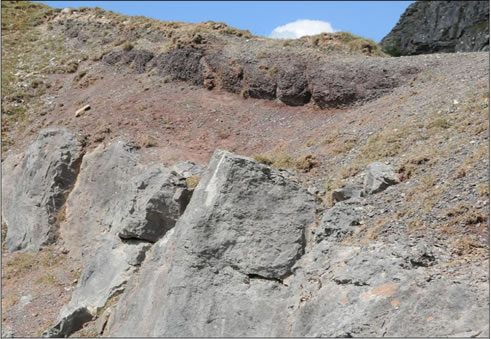
Limestone with mudstone and pebble beds above
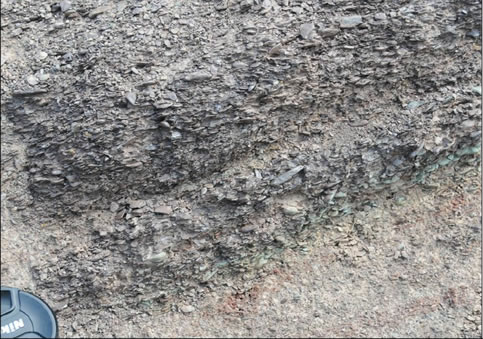
Close up of pebble beds
